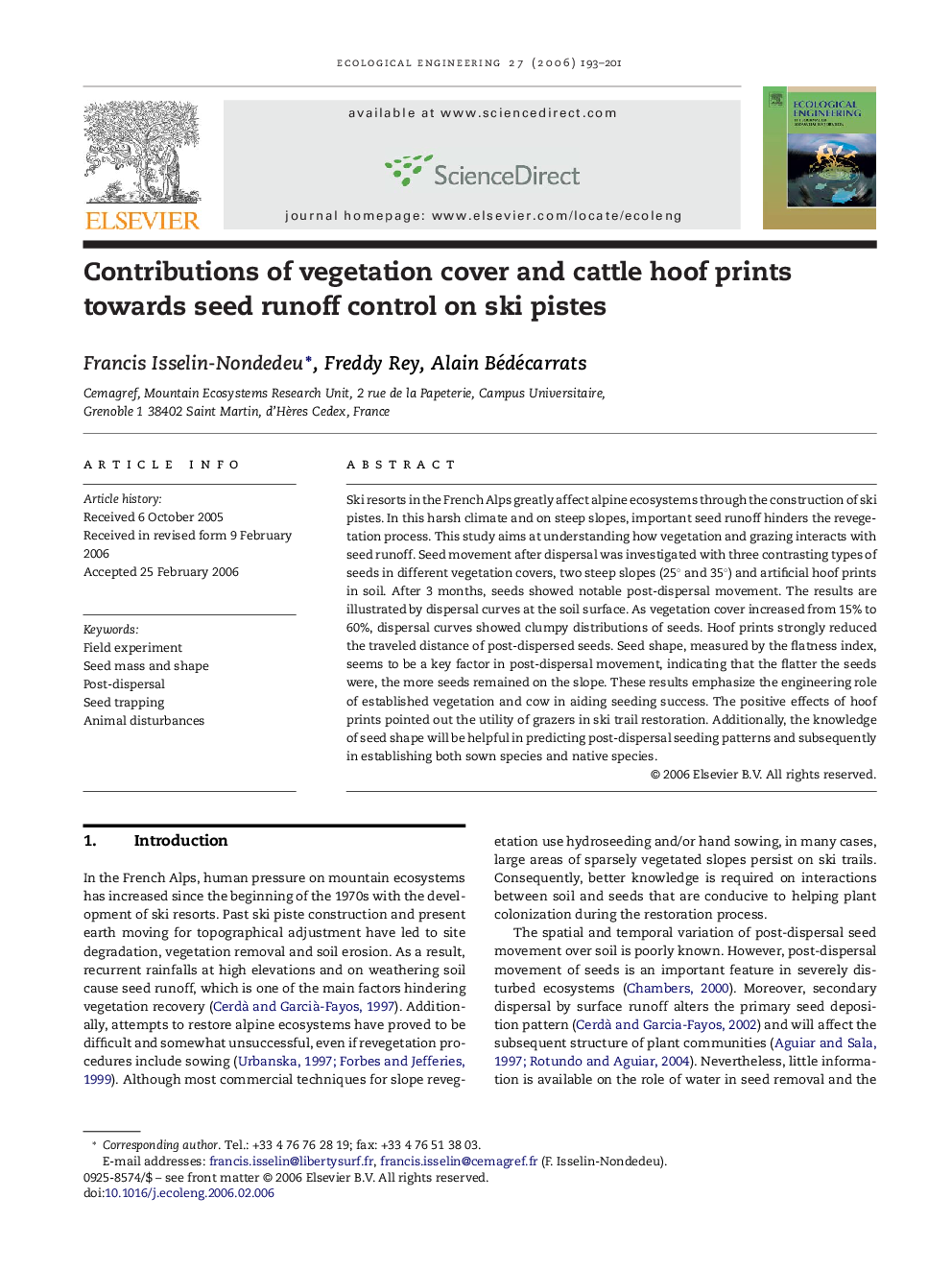| Article ID | Journal | Published Year | Pages | File Type |
|---|---|---|---|---|
| 4391295 | Ecological Engineering | 2006 | 9 Pages |
Ski resorts in the French Alps greatly affect alpine ecosystems through the construction of ski pistes. In this harsh climate and on steep slopes, important seed runoff hinders the revegetation process. This study aims at understanding how vegetation and grazing interacts with seed runoff. Seed movement after dispersal was investigated with three contrasting types of seeds in different vegetation covers, two steep slopes (25° and 35°) and artificial hoof prints in soil. After 3 months, seeds showed notable post-dispersal movement. The results are illustrated by dispersal curves at the soil surface. As vegetation cover increased from 15% to 60%, dispersal curves showed clumpy distributions of seeds. Hoof prints strongly reduced the traveled distance of post-dispersed seeds. Seed shape, measured by the flatness index, seems to be a key factor in post-dispersal movement, indicating that the flatter the seeds were, the more seeds remained on the slope. These results emphasize the engineering role of established vegetation and cow in aiding seeding success. The positive effects of hoof prints pointed out the utility of grazers in ski trail restoration. Additionally, the knowledge of seed shape will be helpful in predicting post-dispersal seeding patterns and subsequently in establishing both sown species and native species.
